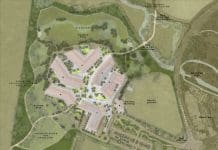348,000 homes could be built on brownfield land that is not being registered as available for development due to problems with the quality of the data in the planning system, a new report by U+I has found
The report, ‘Data and the Planning System’, found that 348,000 new homes could be built on unregistered land, amounting to nearly 29% of housing need arising by 2030.
Brownfield Land Registers are compiled and maintained by local authorities to provide public information about the availability of brownfield land, which is land that has previously been built on and now sits vacant.
Private companies use BLRs to identify potential development sites and bring forward new housing schemes.
U+I’s research found a lack of clarity and consistency in how data is uploaded to BLRs within a number of local authorities, leading to serious distortions in the industry’s understanding of brownfield land availability, hindering development and preventing the construction of new homes.
Their investigation found that across the country there is a divergence in the way local authorities complete these registers, which means many are including sites unsuitable for redevelopment, omitting suitable sites because of a lack of clear guidance, or incorrectly assigning site ownership.
Other issues include a lack of data literacy within planning departments, meaning some sites were assigned coordinates locating them well outside of their local authority boundary, and in some cases, in different countries.
Analysis of available BLRs across Greater London, Greater Manchester, Cambridge, Oxford, Birmingham and East Berkshire revealed that 348,000 new dwellings could be built on brownfield land, amounting to nearly 29% of the overall expected housing need arising in these areas by 2030.
Create a data-led planning system
With the Planning White Paper currently undergoing consultation, U+I is calling on the government to establish a digital taskforce to create a data-led planning system that streamlines the development process for all parties.
“But if we are to build back better, we must have the information to allow us to do it.”
Malcolm Hockaday, director of Planning at U+I, said: “As a regeneration specialist committed to working in partnership with local authorities to deliver homes and communities that rejuvenate our towns and cities, we need a robust and accurate understanding of brownfield land availability across the country.
“Sadly, our investigation has revealed this is not the case.
“If we are to recover our economy from the devastating impact of Covid-19, the government must make good on its commitment to deliver a digital-first planning system, underpinned by robust and accurate data.
“We need this data to understand where there is a need for new housing and investment and support those local authorities who want to build new communities and reinvigorate left-behind places.
U+I is also urging the government to provide additional funding to local authorities to employ a ‘digital specialist’ to help them transition to a 21st Century planning system, as well as appointing a minister within MHCLG to oversee data and digitisation.
















